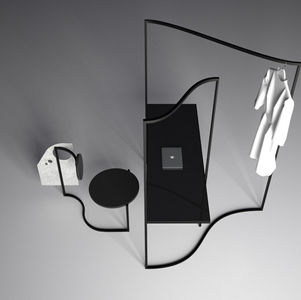
Lifestyle 4.0
Challenge:
How does design for the 4th industrial revolution look like? How can we decrease CO2 emissions from product shipping & packaging and transform current waste streams into valuable resources and continuously circulate them, thus reducing the extraction of finite resources?
Global Context:
In a world in motion, we have entered the 4th industrial revolution. The rapid advancement of technology is redefining what it means to live, work, interact and be human. These challenges ask for new integrative and collaborative systems that will help us adapt fast to this new order of life. Some of the challenges we face are decoupling growth from resource constraints, blending automation with human workforce and redefining value. These ask for a redesign in products and our concept aims to solve this.
Year: 2018
Recognition: Accepted for Venice Design Biennale
Client: Studio's social innovation project
Solved: A new design paradigm.

Today’s society is riddled by consumerism. In the search for instant gratification, shopping is used on a compulsory level, as a dopamine generator. But studies show that it’s not necessarily the reward itself that keeps the dopamine flowing; it’s the anticipation of the reward (Schott, 2008). By changing the design paradigm, we can fulfill the need for dopamine by engaging the user in the fabrication process. Moreover, this also creates greater attachment towards the product, thus discouraging future consumption.
Our new design paradigm implies that, instead of delivering the product to the consumer, you deliver a set of digital design files and instructions that can be processed at any local makerspace by using laser-cutter/3D printer/CNC milling machines, and easily assembled by the user. Each design comes with a recommended set of sustainable materials but the user can choose his/her own, thus becoming a CO-sumer (contributor & consumer).
On an environmental level, digital design enables a quick local production, by the consumer, with local materials, which saves up a considerable amount of CO2 emissions from transportation. Basically this design paradigm also acts as a social nudge towards minimalism and slow-living.
To this end, we are redesigning countless products, creating the next generation of goods that consumers can download and easily make themselves with pre-owned or new sustainable materials.


